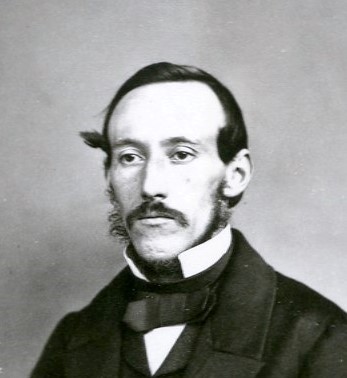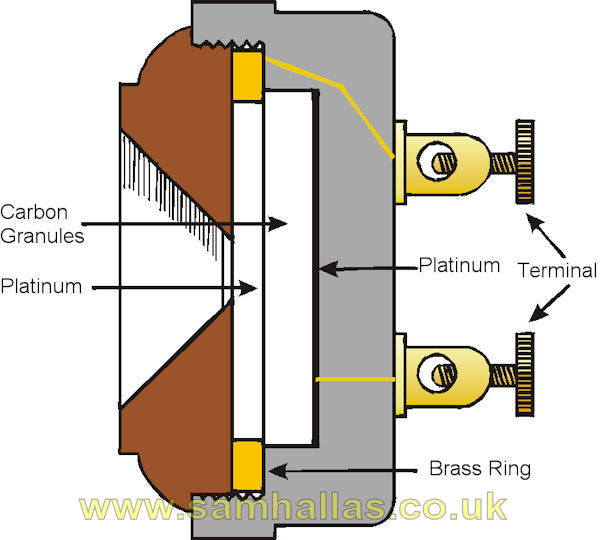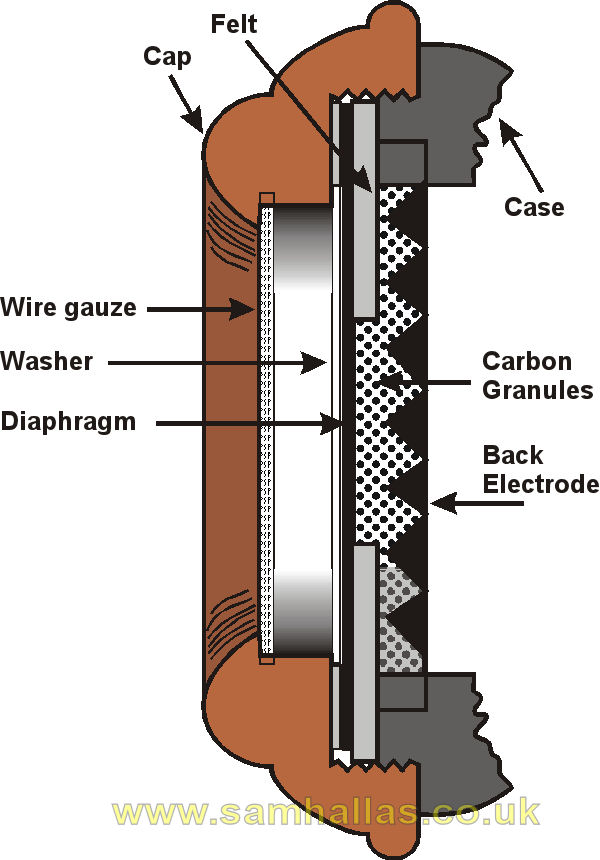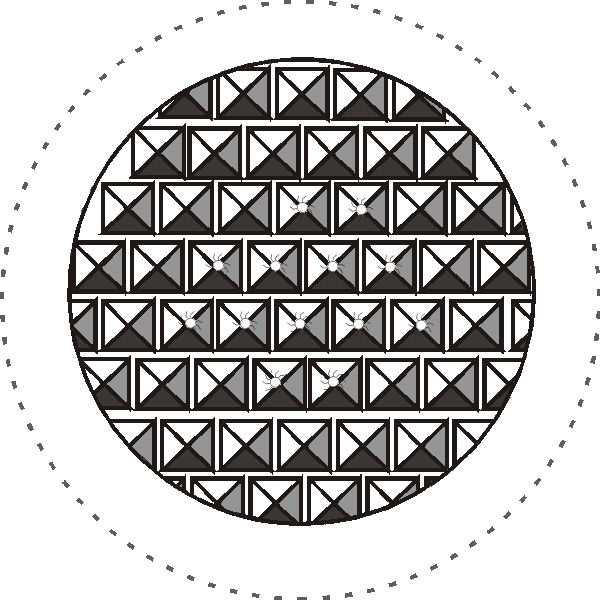
Henry Hunnings (1858-1935)
[All saints Church, Bolton Percy]

Sam Hallas' Website

Henry Hunnings (1858-1935)
[All saints Church, Bolton Percy]

Fig 1. The Hunnings Transmitter in section
In previous parts we looked at the bulk contact Edison transmitter and, the loose contact Hughes transmitter and the point contact Blake transmitter. The next improvement in carbon transmitters was the use of carbon granules. Granular transmitters became the only type used and they remained in use until carbon was displaced by electronics in the 1970s. [click the images for a larger view]
The first of the granular type of carbon transmitter was invented by a clergyman, Rev H. Hunnings, in 1881. Hard carbon granules were confined between two platinum electrodes. Vibrations of the diaphragm varied the pressure on the granules. The resistance reduced under increased pressure and increased when pressure was reduced.
The performance of the Hunnings was a great improvement over previous types. It suffered from what became known as packing, where the granules settled to the bottom of their enclosure and clumped together. This reduced the sensitivity and made the transmitter draw more current.
Deckert devised a modification, known as the Hunnings-Cone transmitter. Both electrodes were made of carbon. The back electrode was scored to produce a series of pyramids or cones. The cones kept the granules well spread and their peaks were not in line so that the granules were prevented from running downhill. The central peaks had small tufts of silk to damp any vibration of the diaphragm.
The Hunnings-Cone Deckert transmitter was used extensively by both the Post Office and the National Telephone Company according to Herbert & Procter. It was succeeded by the Solid Back Transmitter which will be described in the next part.

Fig 2. Hunnings Cone Deckert Transmitter in section

Fig 3. Hunnings Cone Deckert Back Electrode
Telegraphy, 15th Edition, W.H. Preece & J. Sivewright, Longmans, Green & Co, London, 1899
Telephony, T.E. Herbert & W.S. Procter, Sir Isaac Pitman & Sons, London 1934
Early Transmitters, Bob Estreich
www.telephonecollecting.org/Bobs%20phones/Pages/Essays/EarlyTransmitters.htm
Figs 1 & 2 redrawn SMH from Herbert & Procter, Fig 3 from Preece.
Fig 4 Photo taken in Amberley Working Museum © 2006 Sam Hallas.
This article was published in the Telecommunications Heritage Journal Issue 75, Winter 2011
 The Blake
The Solid back
The Blake
The Solid back